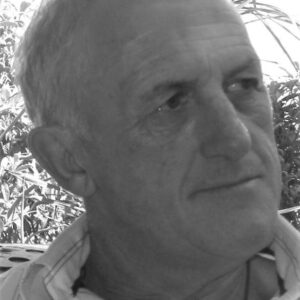The Organizational Performance Equation
First, the case study. Some years ago, I joined an international fashion retail organization. It was a good business but there were a number of issues. In a nutshell, some of the issues were: it was a time of scarce fashion merchant talent, creating vacancy factor and stress in the merchant divisions; staff turnover was relatively high; an exclusive, divisive, non-collaborative mindset that was unreceptive to considering new ways of working prevailed; there were diverse opinions as to what needed to be done for the organization to become a leading international fashion retailer; and, there were cliques and evidence of destructive, antisocial behavior.
4 Key Initiatives
A number of initiatives were started. In hindsight, they had the combined effect of creating significant, sound investments in both the organization's tangible and intangible asset bases. The discussion that ensues after the case study would have provided valuable context to further leverage these investments, had we had these insights at the time. A brief discussion of the 4 key initiatives follows:
1. The leadership group worked with David Lapin, author of Lead by Greatness. This initiative involved developing a clear organizational purpose and clearly defined value drivers that combined powerfully to provide an organizational/leadership compass to inform all decision-making and test all actions against.
2. The recently appointed managing director (MD) was a phenomenal retailer and he put significant effort into developing enviable merchant systems and processes as well as supporting training initiatives to develop the required merchandise buying and planning capability sets.
3. The human resources team worked with the Covey Institute to train and implement the "7 Habits of Highly Effective People." Leaders and line managers, selected specifically for being great role models, were trained to implement the program. This had three effects. Firstly, Covey's first three habits of "being proactive," "beginning with the end in mind," and "first things first" infused an effort-based mindset and an authoritative (versus authoritarian), inductive approach to leading/managing people. This induced a mindset of trying new things, admitting uncertainty, and learning from failure in the knowledge that ultimately the right effort would bring the desired results.
Covey's second three habits of "win-win," "seek first to understand and then be understood," and "synergize" involved role-modeling and coaching prosocial behaviors that promoted an inclusive sense of community within and between teams in the organization. Covey's 7th habit of "sharpen the saw," led to people adopting a more balanced lifestyle, which led to lower stress fatigue and a new "sharpness" in the organization. Interestingly, Covey's subsequent revelation of an "8th habit" was aligned to the work we were already doing with David Lapin.
4. We made a conscious decision to only hire people who would be team players and good, supportive persons to work with. This involved hiring people with strong fundamental capabilities and an effort-based mindset. Fundamental capabilities consist of emotional and prosocial capabilities that enable people to be mindful, good communicators who build and maintain strong, constructive relationships.
An effort-based mindset is one that recognizes that performance is an outcome of the right effort and that failure is something to correct and learn from. Over a period of time, hiring the right people, role-modeling, and coaching fundamental capabilities as well as reinforcing an effort-based mindset paid dividends. It enabled the development of an inclusive sense of community and a commitment to excellence that was enhanced by the work that was being done with David Lapin and the Covey Institute.
Tangible And Intangible Asset Bases
The tangible and intangible asset bases grew and the company performed admirably. There was concern over what was seen as a punitive, "command and control" mindset of the MD. But, much of the negative impact of this was neutralized by the growing cadre of leaders and managers with strong emotional and prosocial capabilities, who could counteract what was seen as antisocial behavior by the MD.
Then catastrophe struck. An overseas acquisition went badly wrong and had to be unbundled at great cost. The share price plummeted and the MD took a lot of unfair and unjust criticism. He took this personally and his wellness suffered, resulting in him absenting himself from the business.
The leadership group, as a leaderless group, responded to take action to get the company back on track. We communicated with the staff honestly and openly regarding the status quo. Multi-functional task teams were initiated to seek cost-saving opportunities and examine ways to restructure the business for greater efficiency and effectiveness. The levels of cooperation, collaboration, and innovation were amazing. Significant cost savings were identified. New and innovative organizational structures were put in place and a voluntary retrenchment scheme implemented, achieving the required reductions while maintaining goodwill.
The business was soon back "on its feet" and the share price recovered strongly and soon exceeded where it had been before the debacle. What effectively happened is that the huge investment made in the intangible asset base paid dividends to enable us to reset and recover the value inherent in the tangible asset base. I now see the intangible asset base as a reservoir, that if looked after, continues to grow and does not drain when you tap into it.
There was concern about the MD coming back into the business and it was put to him that he would only be able to successfully do this if he changed his leadership style. He did come back and he did initially change his leadership style. The company grew from strength to strength.
Lesson from this case study to leaders and investors: Ignore the value of the intangible asset base at your peril.
Understanding The Organizational Performance Equation
Tangible Assets x Intangible Assets = Organizational Performance
This equation is the outcome of the two systems that work in parallel to deliver organizational performance. The operating system is the organizational investment bank for tangible assets and the human system is the organizational investment bank for intangible assets. The degree to which these two systems are aligned by a strong organizational/leadership compass and are well invested in determines the level of organizational performance and the sustainability thereof.
Clarity of Purpose and clearly defined value drivers combine powerfully to provide an organizational/ leadership compass to inform and test all decision-making and action. David Lapin, author of Lead by Greatness, provides valuable insights in this regard.
Developing the right operating system involves specifying the organizational Capacity and Capability investments required to successfully operationalize strategy. Investing in the right Capacity involves having the disciplines in place to transfer financial and human/intellectual capital into the institutional capacity required to deliver strategy. Investing in Capability requires defining the knowledge and skills required for the STEPS to deliver strategy. STEPS is an acronym for Systems, Techniques and Etiquette (ways of working) that come to be seen as the Processes and Style of doing business that is unique to that organization.
The human system requires investment in the constructs of sense of Community and Commitment. The concept of and research behind sense of Community provides guidance for the investment in employees feeling a constructive emotional attachment to the organization, its purpose, and each other. This is an outcome of investing in employees feeling a sense of belonging and that they have influence over things that matter to them and that their efforts are both worthy and worthwhile. Commitment is an outcome of only hiring people who understand and accept that entry and tenure with the organization is conditional on their commitment to the achievement of the organizational purpose, and, to being a good person to work with. There is a tacit understanding that leadership has the right to hold them accountable for this but in return will live up to their obligation of being trusted to be just and fair.
Most leaders understand the value of building a strong tangible asset base. However, they are less certain when it comes to building a strong intangible asset base. This is short-sighted, as the reality is that intangible assets are more robust in challenging times and, after all, the performance equation is:
Tangible Assets x Tangible Assets = Organizational Performance









